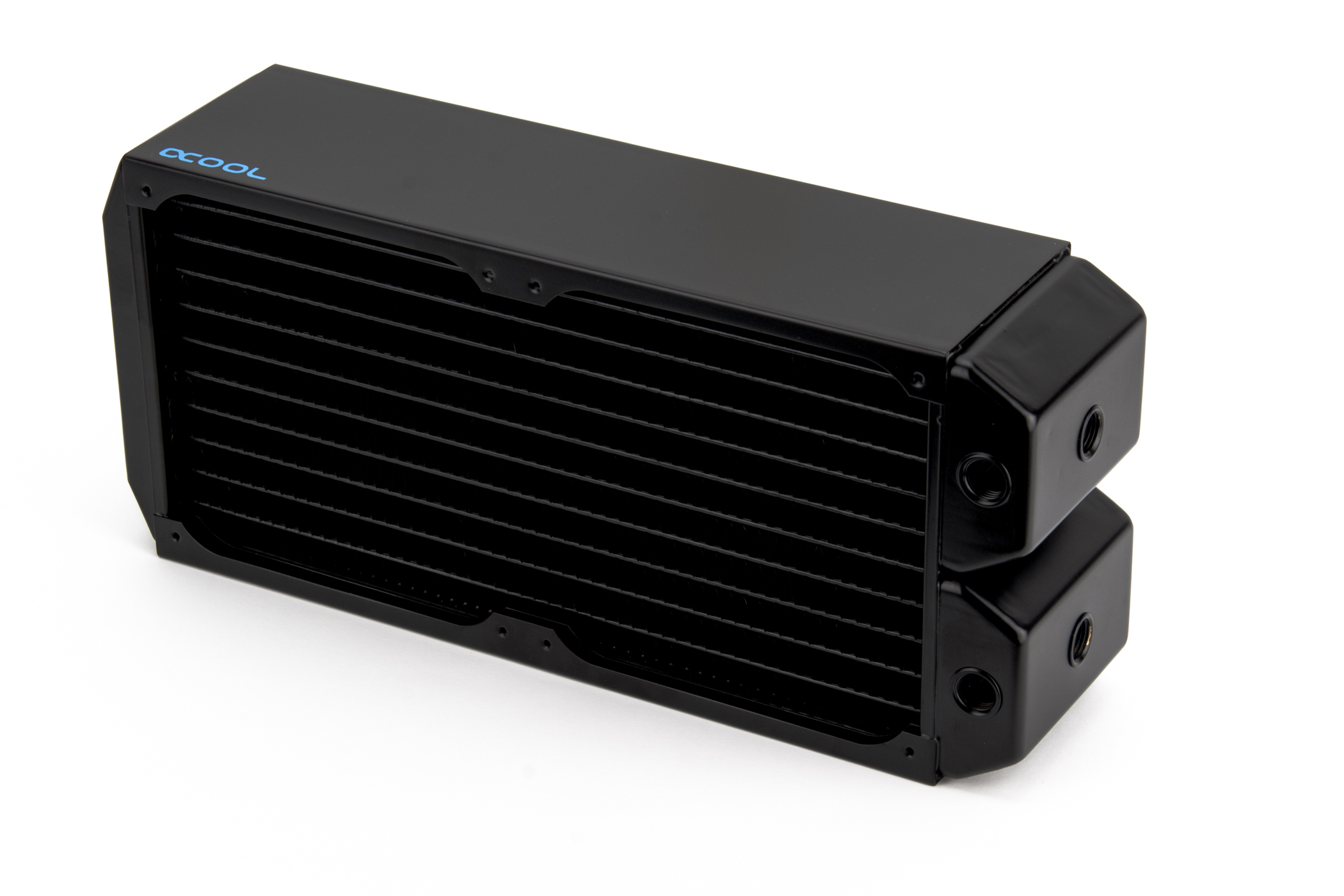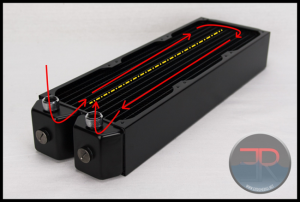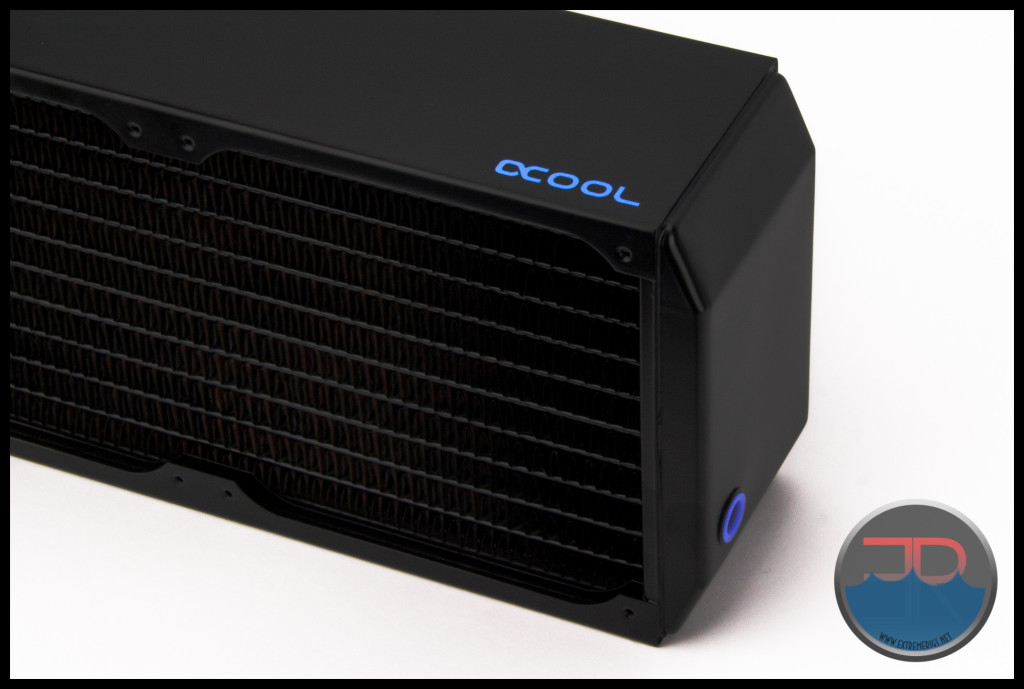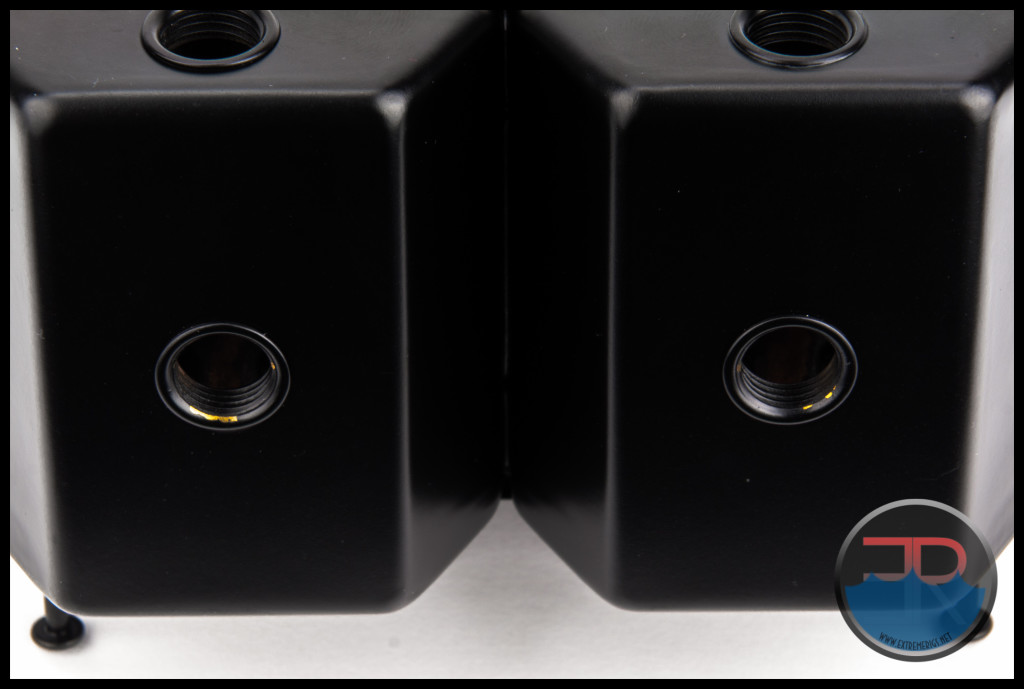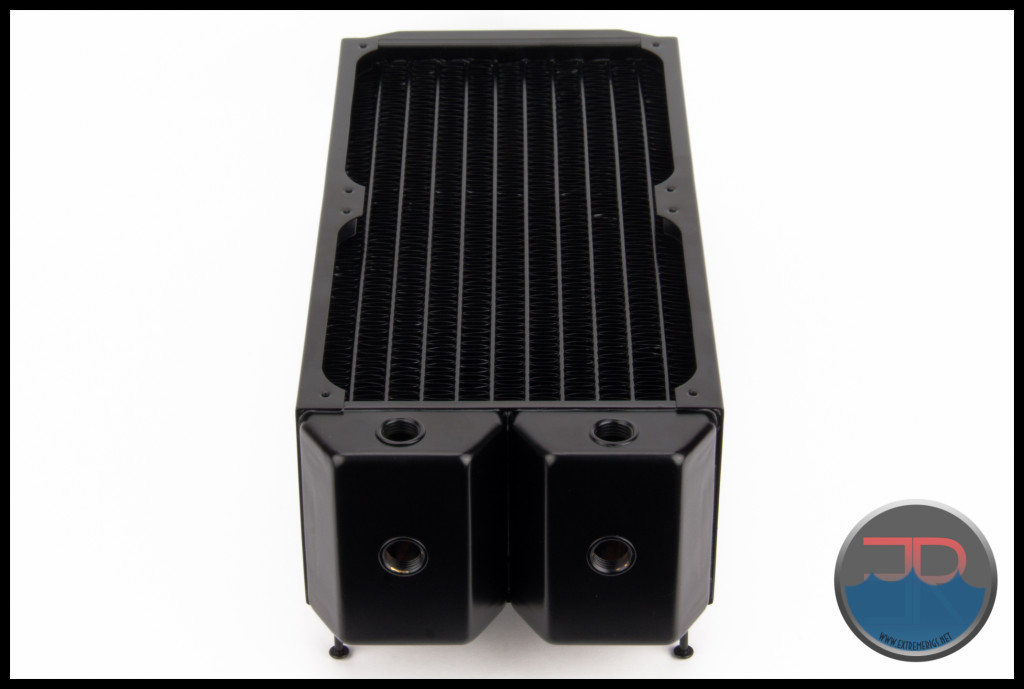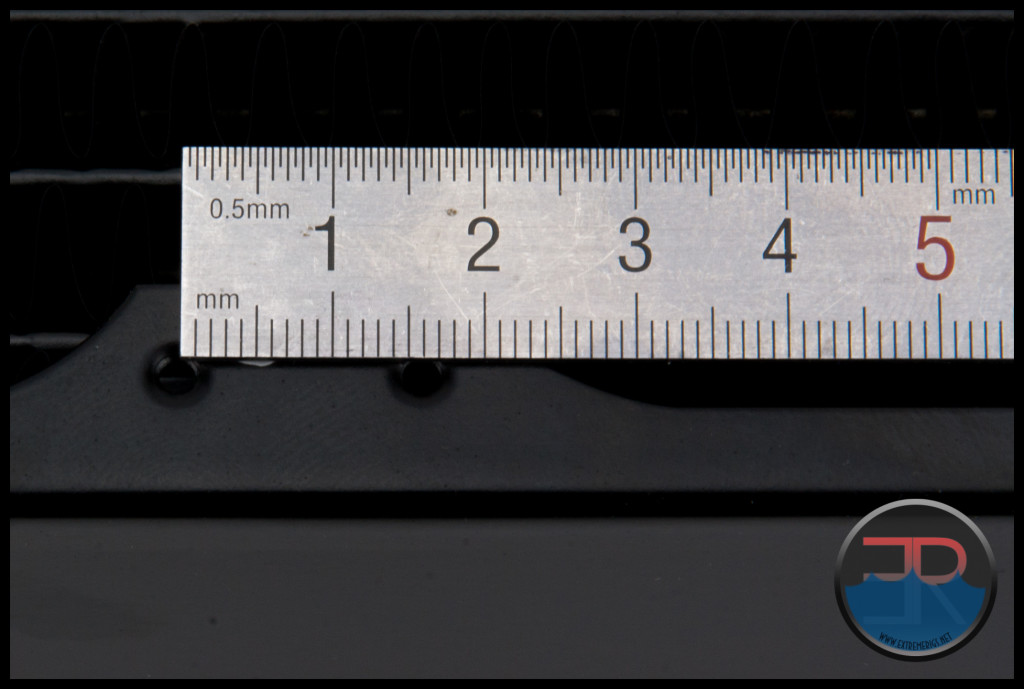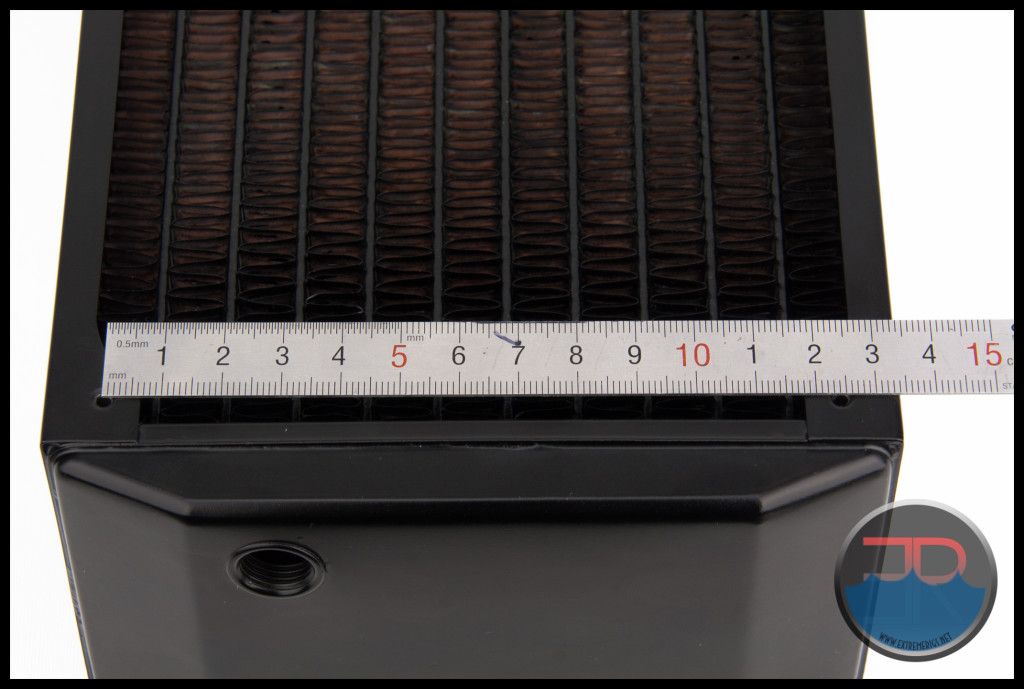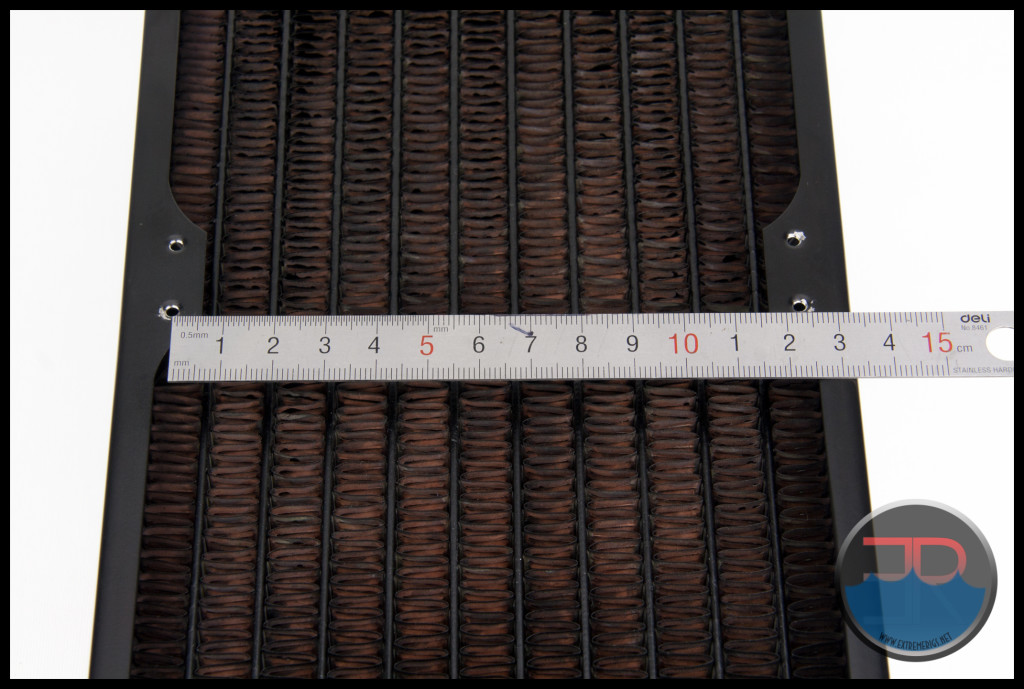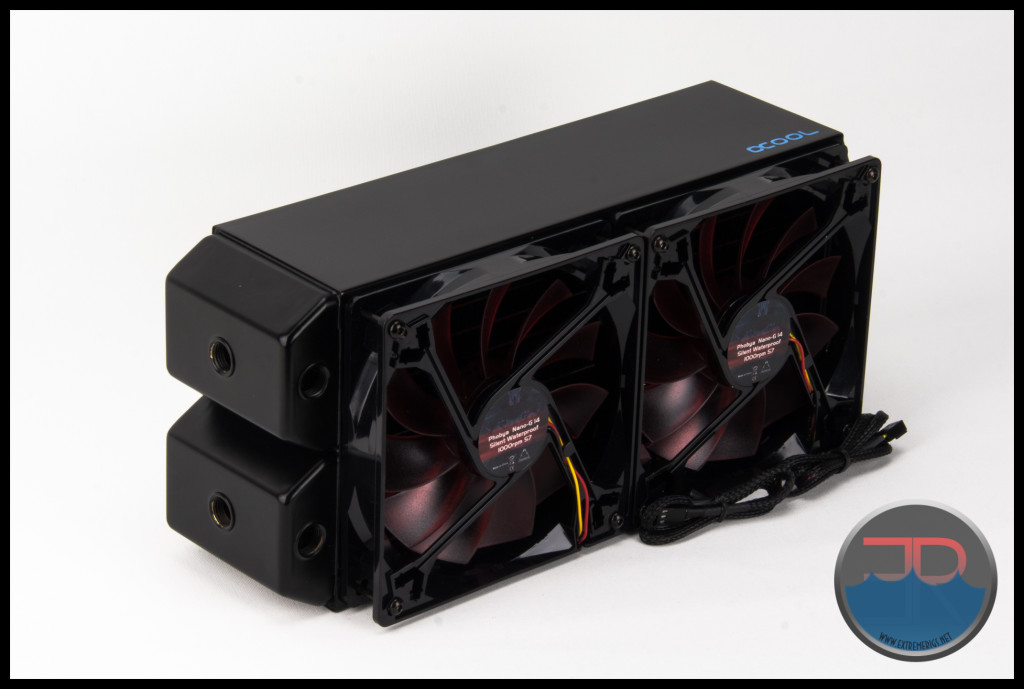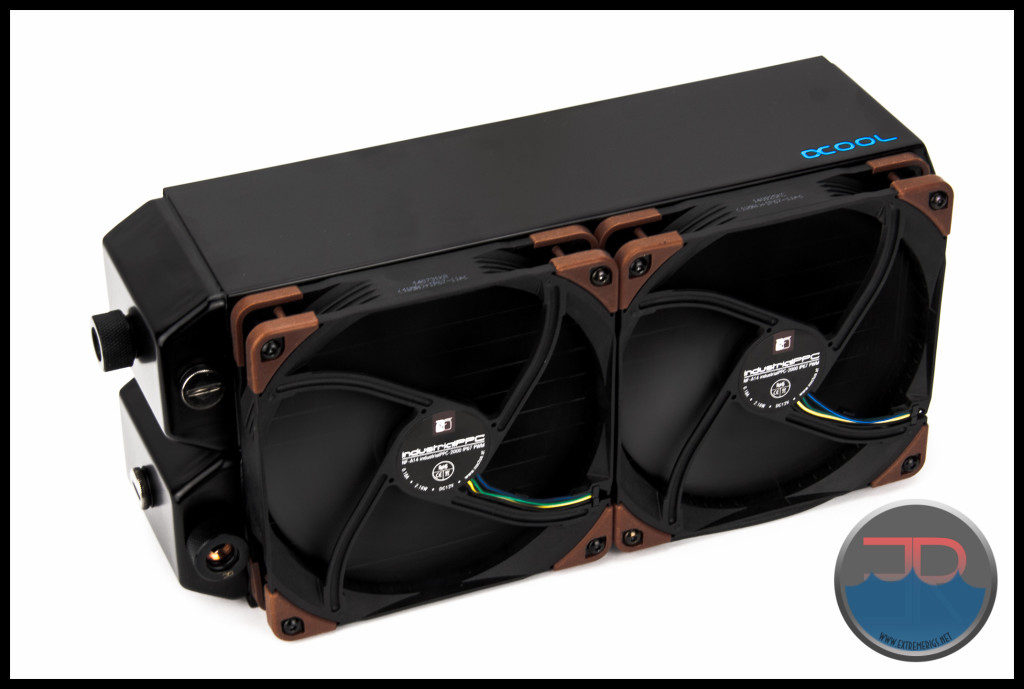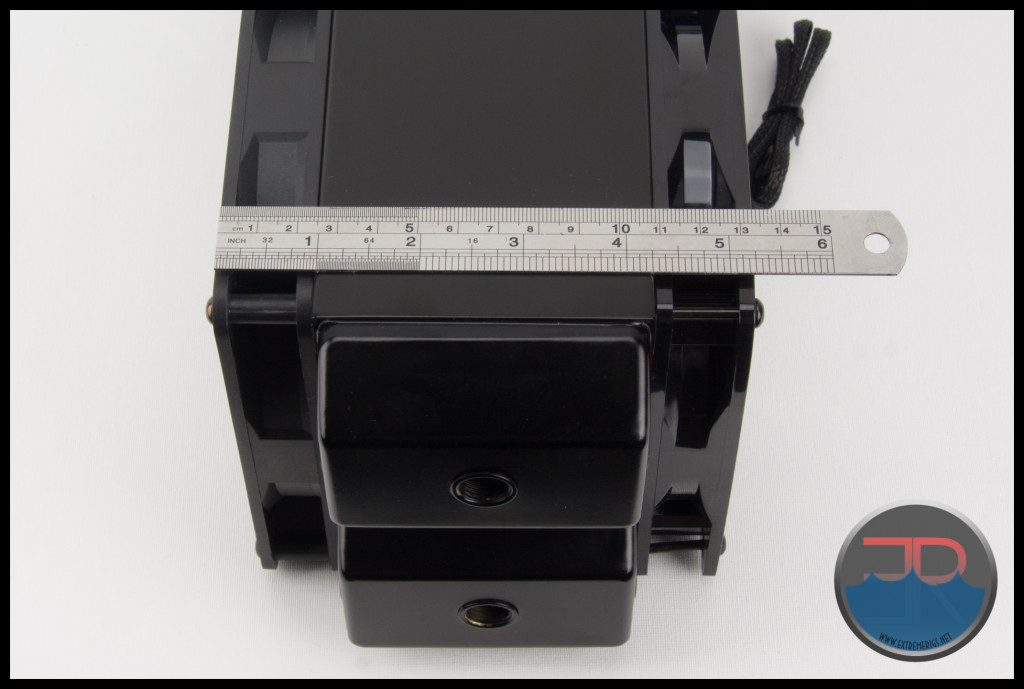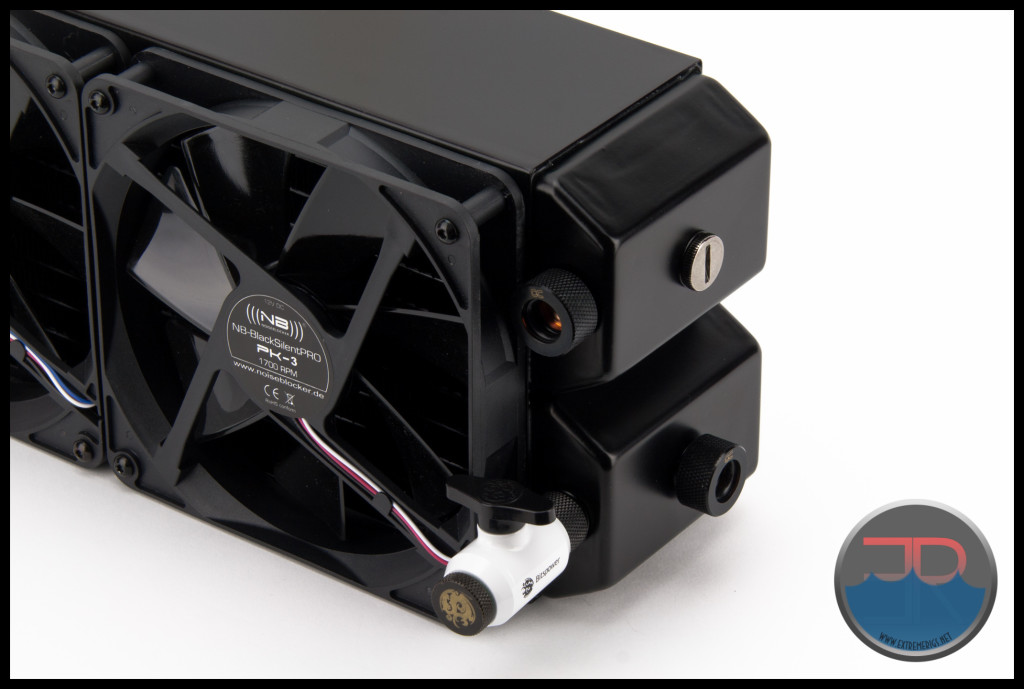Technical Specifications as listed by Alphacool:
Material casing: Side panels steel, threads brass, copper chambers
Colour: Black
Dimensions (LxWxH): 324 x 144 x 86mm
Connection threads: 6×1/4“
Outlet Connection threads: 1×1/4“
Mounting thread size: M3
Pressure tested: 1.5bar
Weight: 2,02kg”
Thickness: Monsta”
Unfortunately a Technical Drawing of the Monsta 280 could not be located.
Dimensions Measured on the Radiator Tested:
 The review sample has a thickness of 84.5mm which differs from a fair bit from what is stated on the packaging and is slightly thinner than the specification listed on Alphacool’s website. The +1.5 and +3 are to be added if the supplied port plugs are fitted to the ports on each side/end.
The review sample has a thickness of 84.5mm which differs from a fair bit from what is stated on the packaging and is slightly thinner than the specification listed on Alphacool’s website. The +1.5 and +3 are to be added if the supplied port plugs are fitted to the ports on each side/end.
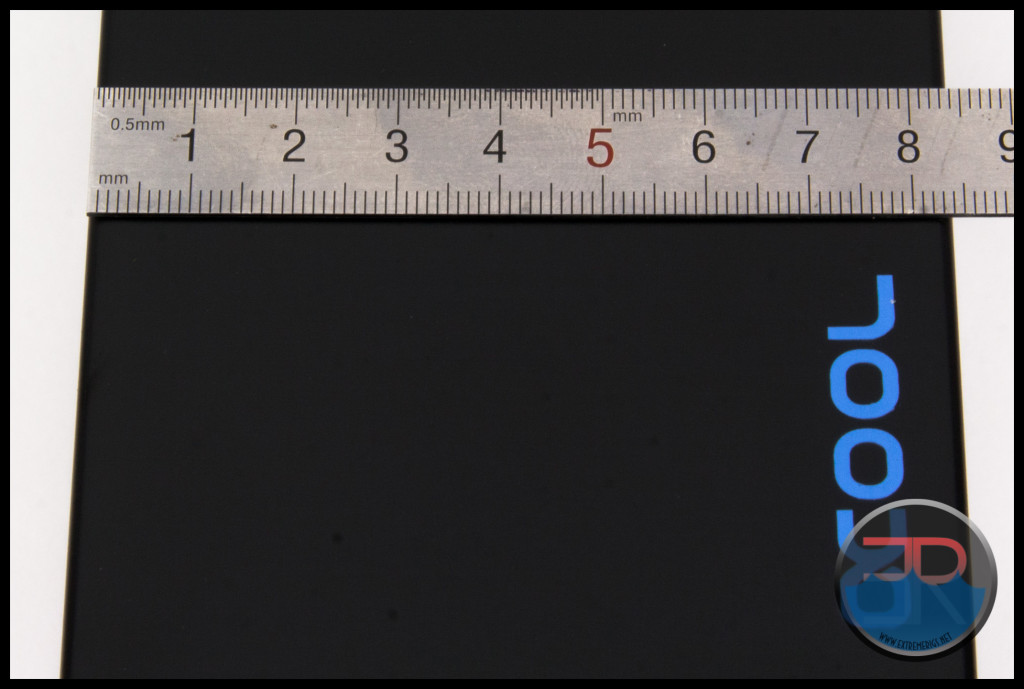
To be honest, 5mm variance is probably neither here nor there. If you are considering a Monsta radiator of any size, you will either already have a case or be getting one that can easily accommodate these oversize beasts such as one of the larger models from CaseLabs.

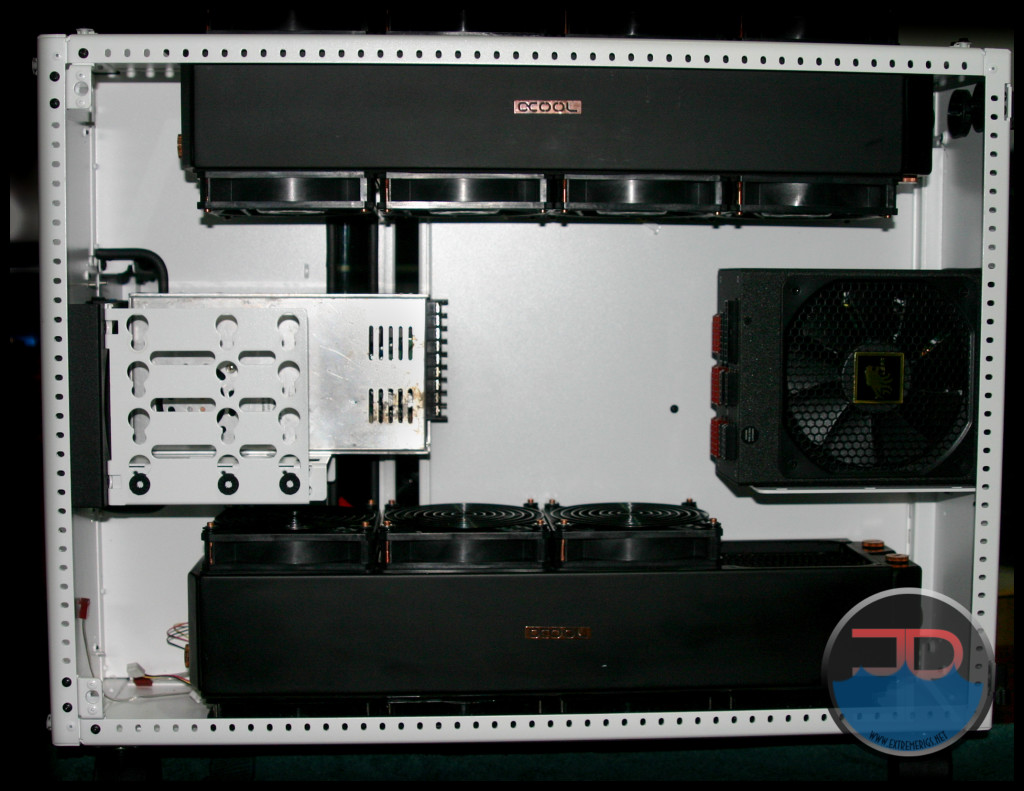 The above photo has 2 Monsta 480mm radiators fitted, both with Push/Pull fan assemblies. Warning: Don’t try this at home!
The above photo has 2 Monsta 480mm radiators fitted, both with Push/Pull fan assemblies. Warning: Don’t try this at home!
To get a real scale for the Monsta 280, it needs to be seen side by side with some other 280 mm radiators. Here we see Alphacool’s range of NexXxos 280mm radiators. Normally a 60mm radiator such as the UT60 would be classed as thick, but the Monsta 280 takes it to another level.
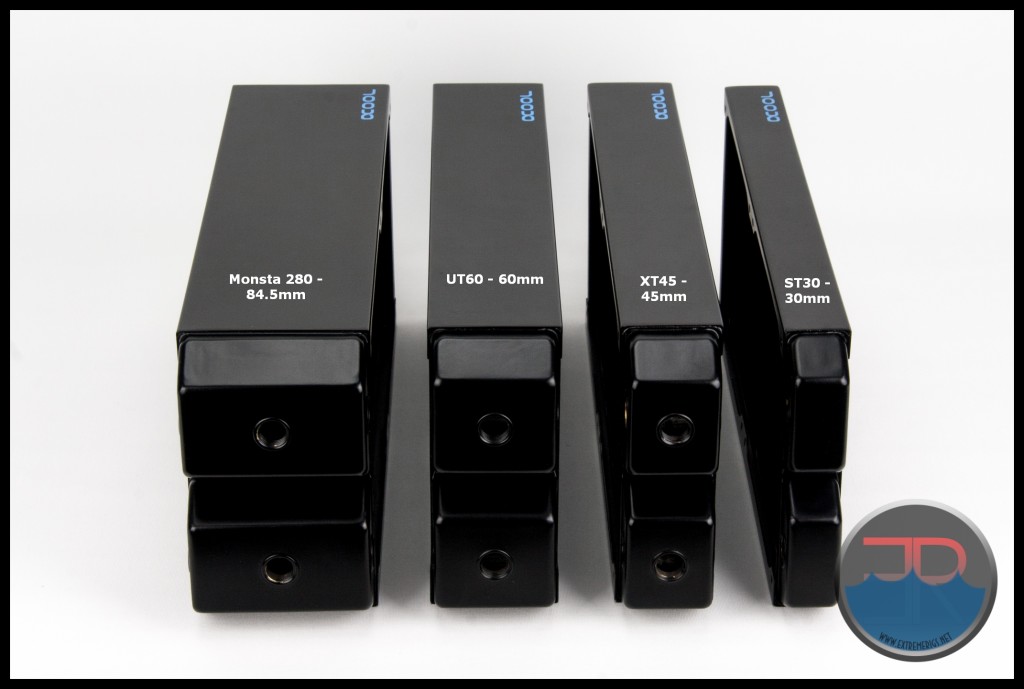
Radiator Core Dimensions:

The 62.5 mm thick core is made up of 4 layers of 10 tubes arranged in the standard U-Flow configuration. The fin arrangement consists of single serpentine fins which are louvered and have a 10 FPI count. On a thinner radiator this somewhat sparse core figuration would certainly be best suited for low speed fans, but with the Monster’s thick core all bets are off until we see some data.
The following picture is a reference which shows a typical U-Flow coolant flow path, where the coolant travels up all the tubes on one side (left in pic) of the rad and then returns down the other side. U-Flow is most easily recognized when the port end has 2 separate tanks, such as those on the Monsta 280.
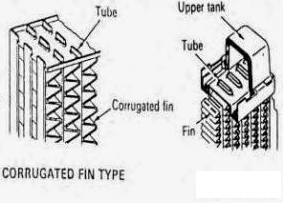
The louvered fins are spaced very evenly between the tubes and our sample had the specified fin count of 10 FPI.
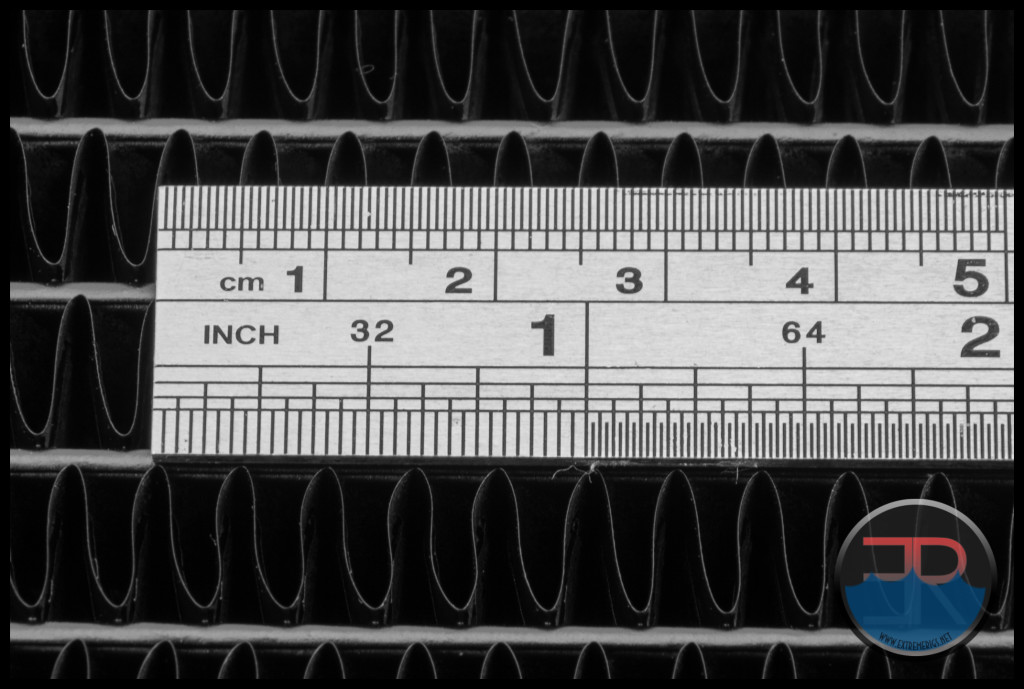
Finish and Features
The satin black paint finish on the Monsta 280 is buttery smooth. I really could not fault the paint work on this one which is in contrast with some other Alphacool radiators I’ve received for review.
The steel side panels give the radiator lots of support and the whole thing feels very solid.
Some time ago a limited edition white version of the Monsta 280 was available, but these all seem to have disappeared, so for now it seems only the satin black finish available.
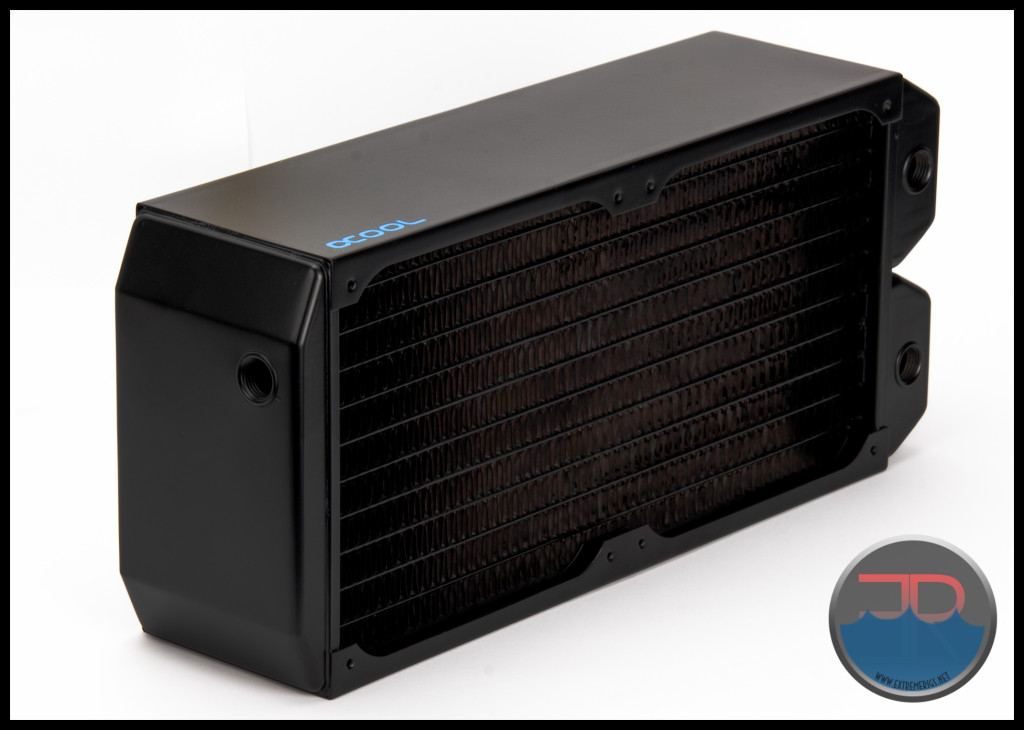
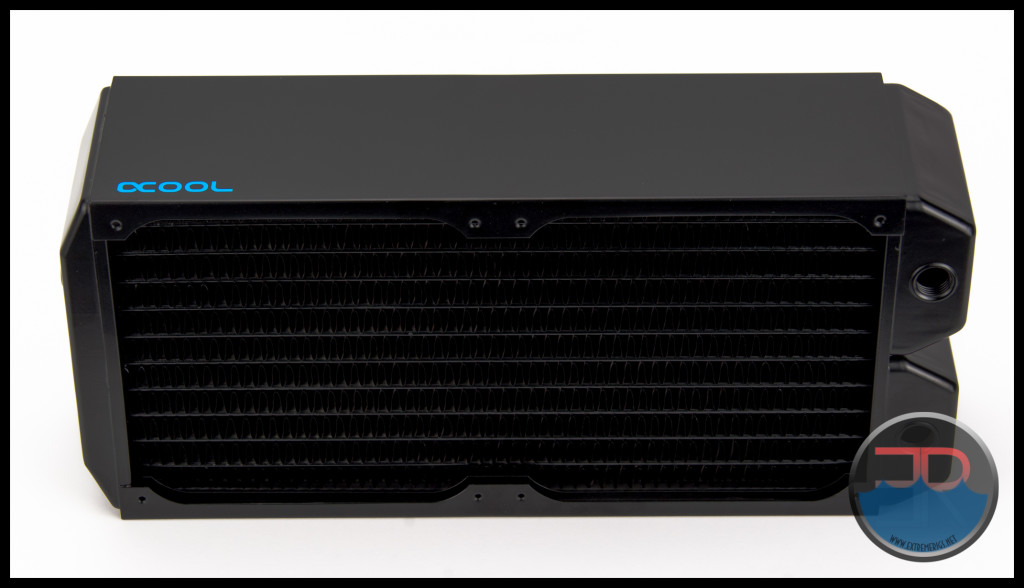
A small Alphacool logo is present on each side. I think the painted blue logo represents the latest (4th, maybe 5th) generation of the NexXxos series radiators. Due to the multi-port nature of the Monsta 280, it can be roof mounted or floor mounted and the logo will be the right way up now matter which end of the case the ports are located.
Screw protection plates are fitted under each fan attachment hole on the Monsta 280.
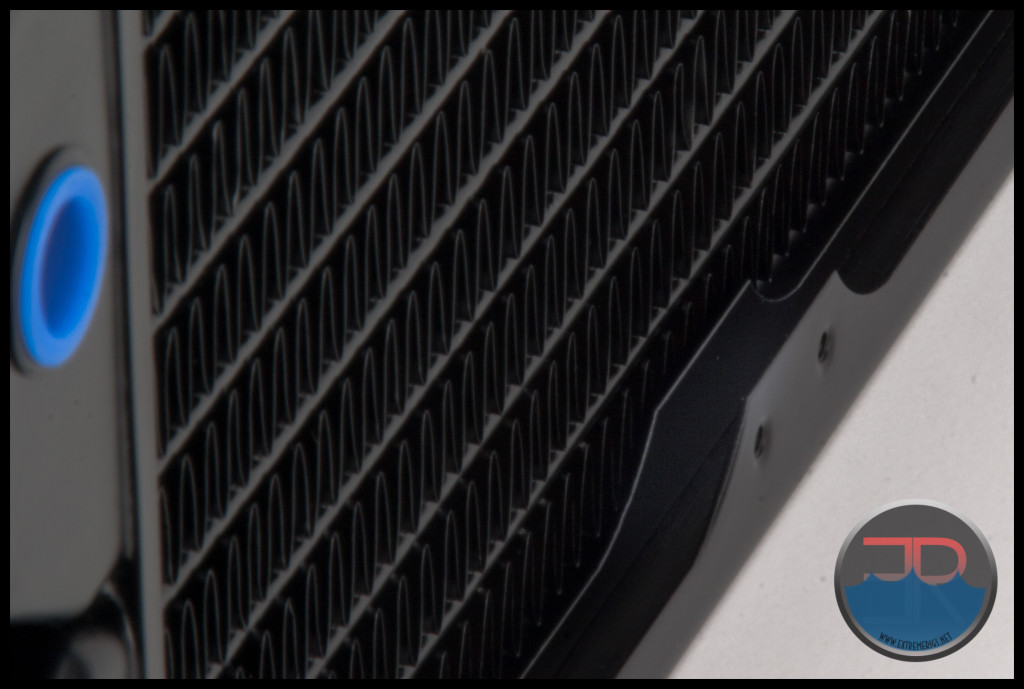
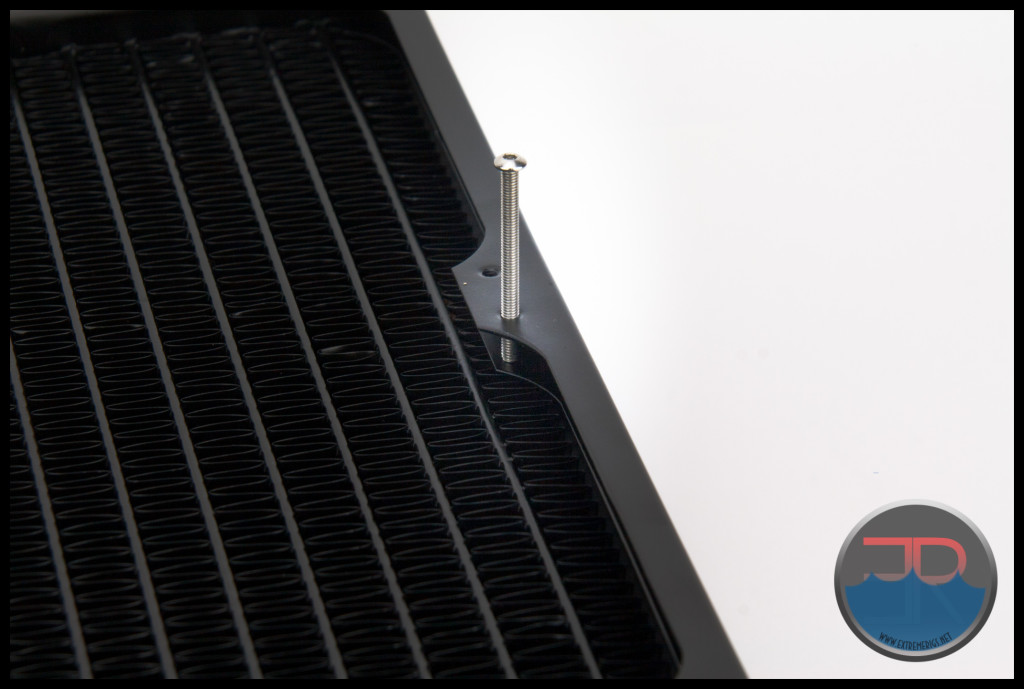 These could save the radiator from damage if custom length screws are used. However as no tubes are directly under the fan mounting holes, terminal damage is unlikely to occur anyway.
These could save the radiator from damage if custom length screws are used. However as no tubes are directly under the fan mounting holes, terminal damage is unlikely to occur anyway.
When using either of the supplied screw sets which have only 5mm of thread, it is impossible to damage the core by tightening the screws down too far.
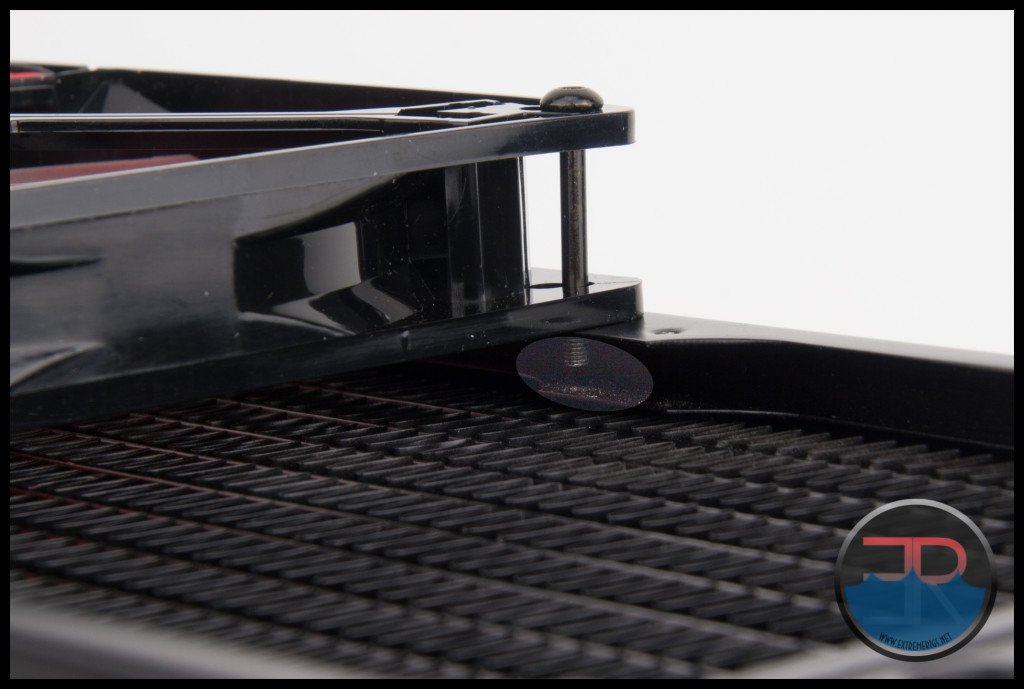 Above a supplied 30mm screw fixing a 25mm thick fan in place. These are the perfect length for direct fan attachment or for fixing through a case panel.
Above a supplied 30mm screw fixing a 25mm thick fan in place. These are the perfect length for direct fan attachment or for fixing through a case panel.
Below the 35mm screws are used and we can clearly see (click to open in new tab) the thread has run out preventing the screw from being tightened down any further. Hence our suggestion earlier that for a Push/Pull set-up you will likely need to purchase addition 30mm length screws.
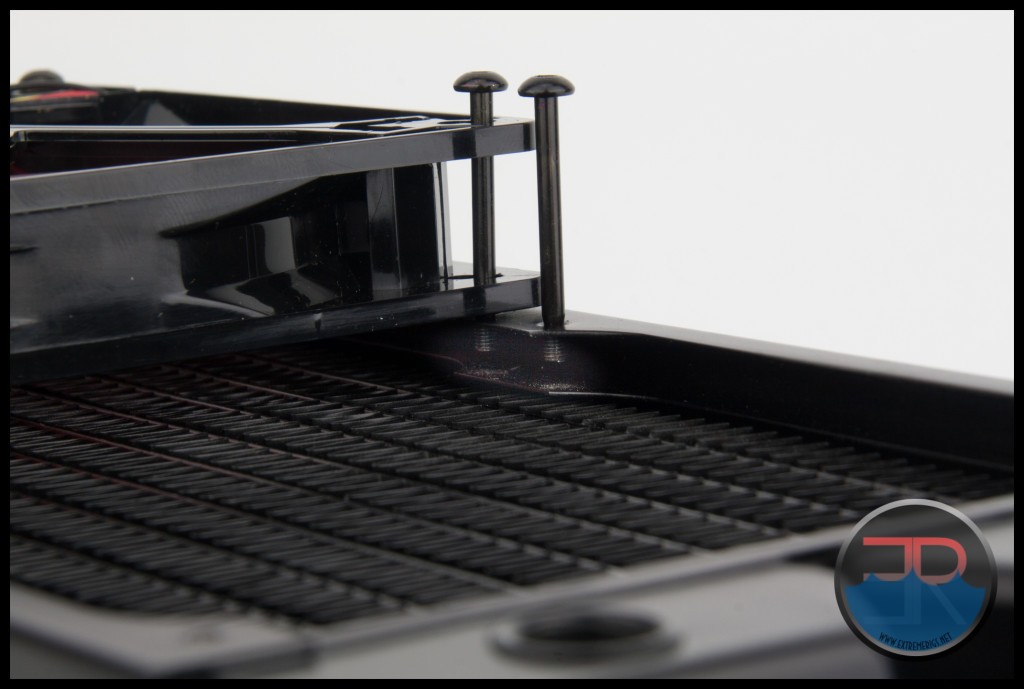 So every tube protection method is incorporated into the Monsta 280 design – protection plates, depth of shrouds, tube locations and screw thread length. Perfect!
So every tube protection method is incorporated into the Monsta 280 design – protection plates, depth of shrouds, tube locations and screw thread length. Perfect!
The Monsta 280 is fitted with a total of 6x G 1/4 ports on the tank end of the radiator. We love multi-port rads, so this just makes us happy.
Each tank has 3 ports in total, with one port one each side of the tanks and one on the ends.
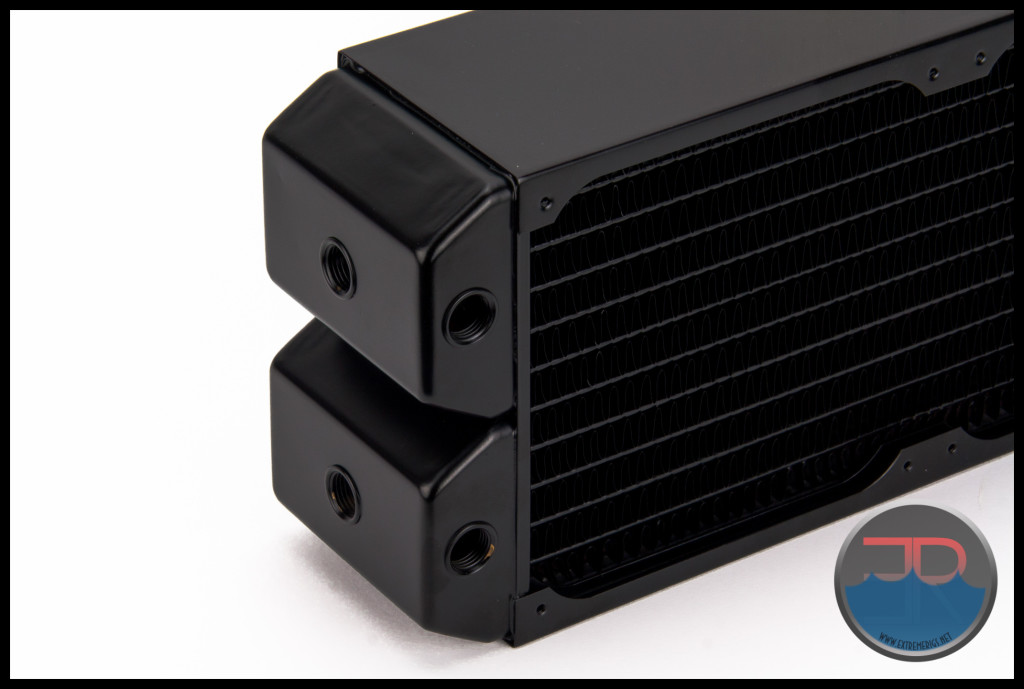 Either tank can be used as the inlet or outlet side for the coolant flow path, and any of the 3 ports on each tank can be selected to install the fittings for tube attachment.
Either tank can be used as the inlet or outlet side for the coolant flow path, and any of the 3 ports on each tank can be selected to install the fittings for tube attachment.
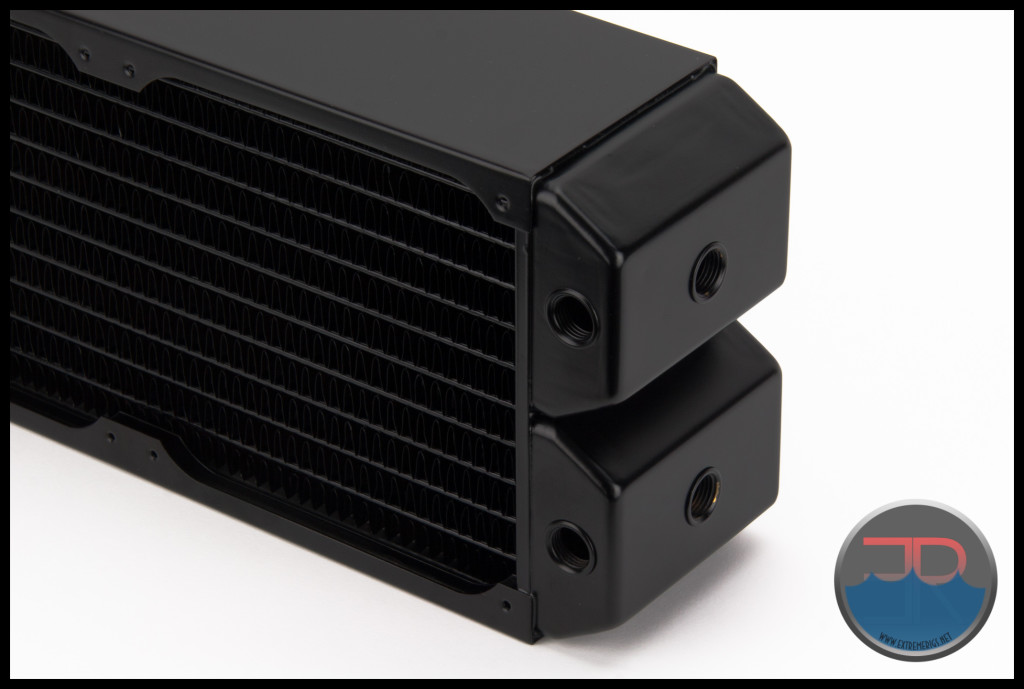 so long as one tank is coolant in, and the other is coolant out, such as this “traditional” fitting placement.
so long as one tank is coolant in, and the other is coolant out, such as this “traditional” fitting placement.
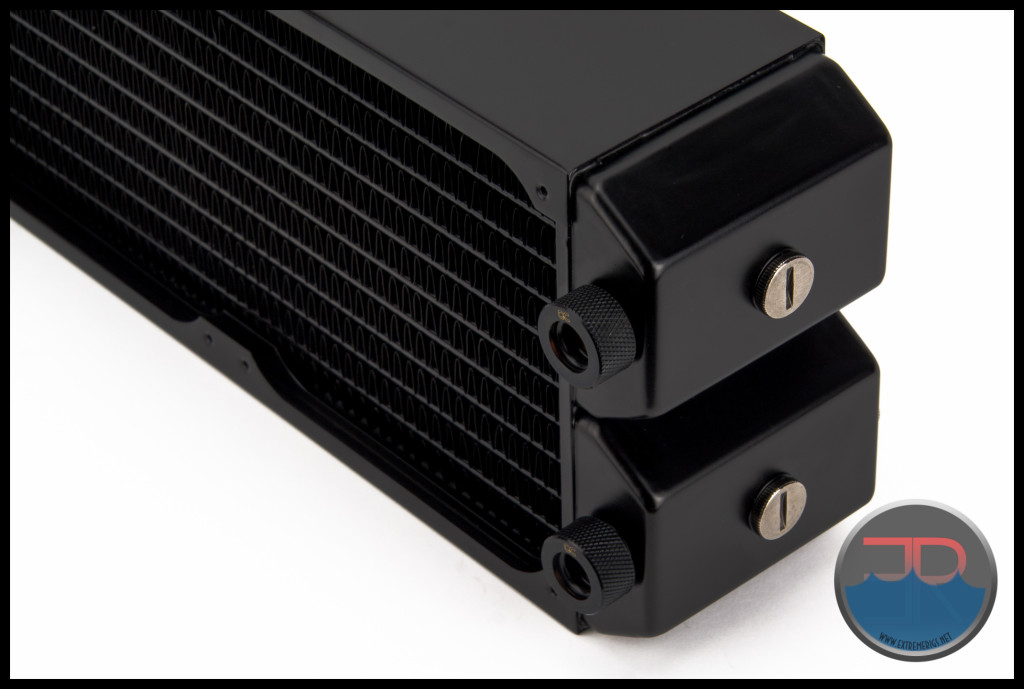 Having the option to route tubes in and out at different angles offers opportunities for cleaner or even hidden tubing runs depending on the installation orientation.
Having the option to route tubes in and out at different angles offers opportunities for cleaner or even hidden tubing runs depending on the installation orientation.
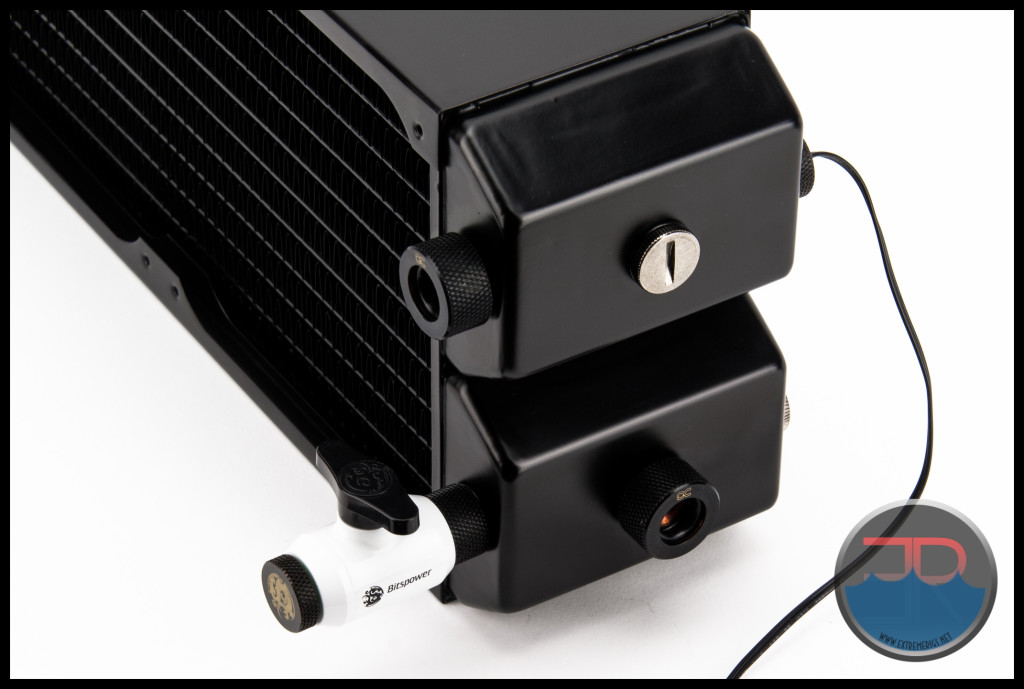 And let’s not forget about possibilities to add a drain tap and temperature sensors. Mulit-Port radiators add so much flexibility to users in virtually every installation scenario.
And let’s not forget about possibilities to add a drain tap and temperature sensors. Mulit-Port radiators add so much flexibility to users in virtually every installation scenario.
On the return and of the Monsta 280 we also have an ancillary port which can be used as an air bleeding port, fitting a temperature sensor, fill port, or a drain port depending on the orientation that it is mounted.
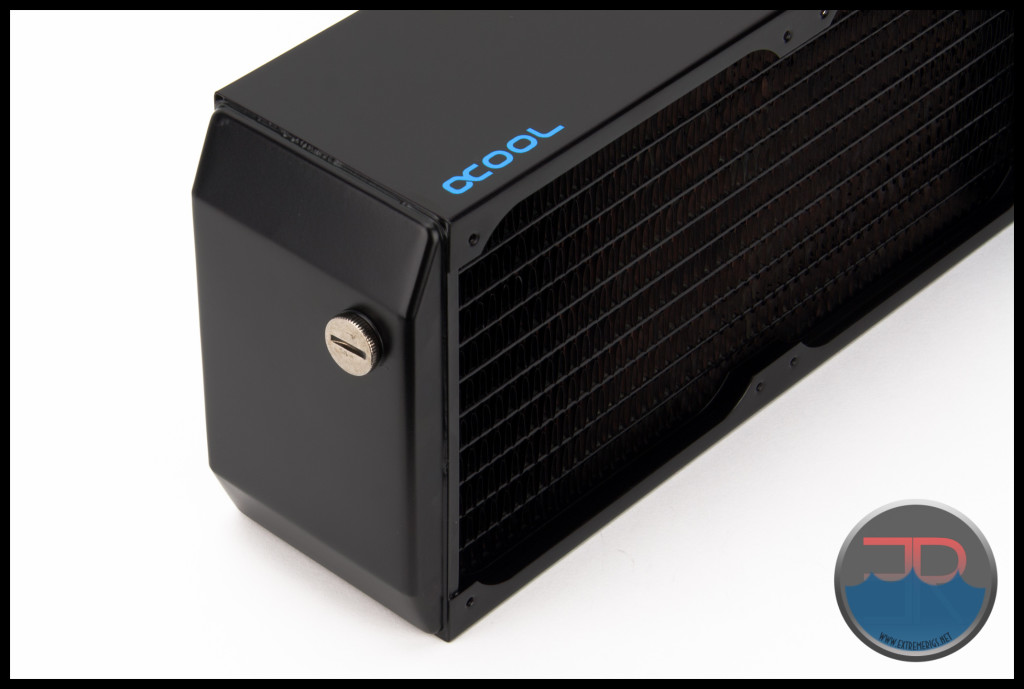
One of the only criticism I have with the current NexXxos range including the Monsta 280 is that the threads of the G 1/4 ports have also been painted black. It is unavoidable that paint will chip away or get scraped off when screwing fittings into the threads and where will these paint chips end up ? In the micro channels of your blocks most likely, possibly reducing the flow rate and overall performance of the system.
Another issue is that Alphacool have chosen to use a 16mm spacing between the central fan attachment holes. Every other manufacturer uses a 15 mm spacing, so it is strange that Alphacool have decided to go with 16mm. I have seen instances in some build logs where users have had to unnecessarily modify the mounting holes on their cases to accommodate the screw locations on the 140.x Alphacool radiators.
While the 16mm fan spacing is bothersome, of more concern is the spacing for each fan: in particular the spacing across the width of the radiator. I am unsure if there is an industry standard that the width fan mounting holes should be, but I am certain that all the 140mm fans I have, are made with a 125mm spacing.
Below we see a 124mm spacing at one end of the Monsta 280 (all were similar). This is usable, but only just. Because the supplied screws have a thicker shank there is less wiggle room to move the fan when starting off the threads. Therefore a tighter tolerance is needed for the threaded screw holes.
The spacing across the 2 center sets of holes was worse at ~123mm. I was able to get all 4 screws in for each fan, but I was feeling uncomfortable when starting off the last screw of each fan. The “tell tales” of scratched paint around the screw holes are not just there from me fumbling around. The holes are not positioned correctly to allow for trouble free installation. I have no doubt this will lead to cross threading and rounding off of the threads sooner rather than later.
Having said that I did get some photos taken with fans attached.
If your thinking of going Push/Pull with a Monsta 280, make sure you have ~150mm of available real estate in you case as the radiator and fans alone measure in at ~135mm.
Internal Cleanliness:
Before moving on to the performance assessment I want to mention the internal cleanliness of the Monsta 280 sample. This is not something I normally do because cleaning new radiators before use is just one of those chores which we all have to do.
Alphacool radiators have been consistently among the dirtiest which have passed over the ER test benches and has been noted in numerous reviews we have done on them in the past.
Things have now changed and the good news is that the latest revision of NexXxos radiators (with blue logos) are coming out with a different cleaning process after manufacturing. This new process has resulted in unexpected and surprisingly clean internals. I recently flushed/cleaned 5 different current version Alphacool radiators including the Monsta 280 reviewed here, and all were within reasonable expectations of being clean and free of excess amount of debris after the first rinse.
We still strongly advise cleaning all new radiators prior to use, but it is great to see that what was a terrible problem has now been rectified.
So here we have a ~85mm thick radiator with a low density core. It has 6 ports plus an ancillary port. Screw protection plates are fitted but some of the screw attachment holes are at best, not very user friendly and at worst at risk of being inadvertently cross threaded. The paint finish on the sample was excellent but we feel that the paint on the inside of the ports could lead to unwanted problems.
Let’s see how it performs…







